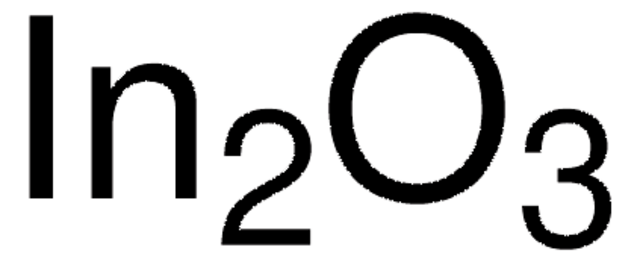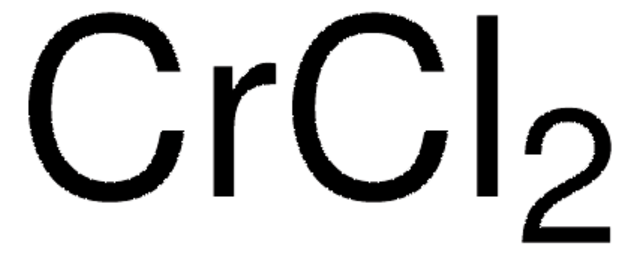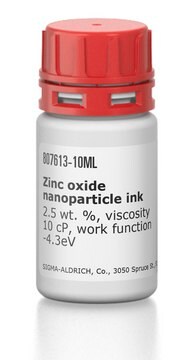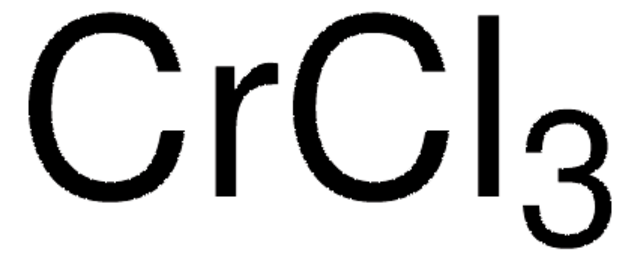632317
Indium(III) oxide
nanopowder, <100 nm particle size (TEM), 99.9% trace metals basis
Synonym(s):
Diindium trioxide, Indium sesquioxide
About This Item
Recommended Products
vapor pressure
<0.01 mmHg ( 25 °C)
Quality Level
Assay
99.9% trace metals basis
form
nanopowder
reaction suitability
reagent type: catalyst
core: indium
particle size
<100 nm (TEM)
density
7.18 g/mL at 25 °C (lit.)
SMILES string
O=[In]O[In]=O
InChI
1S/2In.3O
InChI key
SHTGRZNPWBITMM-UHFFFAOYSA-N
Looking for similar products? Visit Product Comparison Guide
General description
Application
- Amine Functionalized Surface Frustrated Lewis Pairs for CO2 Photocatalysis: Discusses the enhancement of photocatalytic performance for CO2 reduction using indium oxide hydroxide with amine-functionalized surface frustrated Lewis pairs (Q Guan et al., 2024).
- Enhancing Gas Sensing Performance through UV Photoexcitation: Explores the improvement of room-temperature gas sensing capabilities of metal oxide semiconductor chemiresistors, including indium(III) oxide, by 400 nm UV photoexcitation (S Paul et al., 2024).
- Indium(III) Complexes in Industry and Nanoparticle Synthesis: Reviews the use of trivalent indium complexes as catalysts and precursors for various industrial applications and the synthesis of nanoparticles like indium oxide (TO Ajiboye et al., 2024).
- Ag/In2O3 Inverse Opal Synthesis: Details the synthesis and perspectives of silver/indium oxide inverse opal structures, highlighting their potential in semiconductor applications due to their optical properties (AV Lyutova et al., 2024).
- Photocatalytic Generation of Hydroxyl Radicals and Manganese Species: Investigates the use of indium oxide in enhancing the photocatalytic performance of permanganate for efficient micropollutant removal under visible light (J Li et al., 2024).
Storage Class Code
11 - Combustible Solids
WGK
WGK 3
Flash Point(F)
Not applicable
Flash Point(C)
Not applicable
Personal Protective Equipment
Regulatory Listings
Regulatory Listings are mainly provided for chemical products. Only limited information can be provided here for non-chemical products. No entry means none of the components are listed. It is the user’s obligation to ensure the safe and legal use of the product.
PRTR
Class I Designated Chemical Substances
ISHL Indicated Name
Substances Subject to be Indicated Names
ISHL Notified Names
Substances Subject to be Notified Names
JAN Code
632317-5G:4548173313245
632317-VAR:
632317-BULK:
632317-25G:4548173313238
Choose from one of the most recent versions:
Already Own This Product?
Find documentation for the products that you have recently purchased in the Document Library.
Customers Also Viewed
Our team of scientists has experience in all areas of research including Life Science, Material Science, Chemical Synthesis, Chromatography, Analytical and many others.
Contact Technical Service











